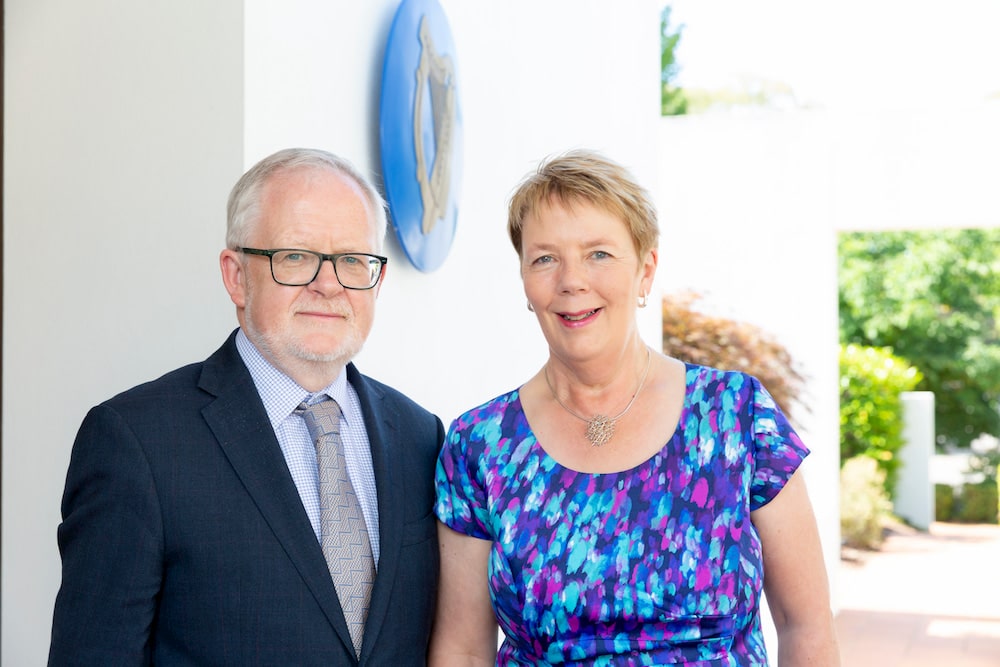As Ireland’s Ambassador to Australia, His Excellency Mr Breandan O Caollai, and his wife, Ms Carmel Callan, show Canberra Daily around the 2004 custom-built residence, the couple entirely live up to the Irish stereotype with their genial, humorous nature.
The tour of grandness begins in the entrance that features custom-designed furniture from Irish designer Michael Bell and his wife Susan Zelouf.
Despite a lack of formal training, Bell’s furniture is made with traditional joinery reflects Irish story-telling mores. His matching obelisks symbolise energy, and the detailed side tables with individual cherry-disk legs and mirrors represent the eclipse of the planet and “reaching for the stars.”
“Ireland is on the other side of the world,” Ms Callan said. “You see the sun, when we see the moon.”
The entrance rug was gifted to the residence, after its 2011 exhibition “of all things Ireland”, Not Just Ned, at the National Museum of Australia.
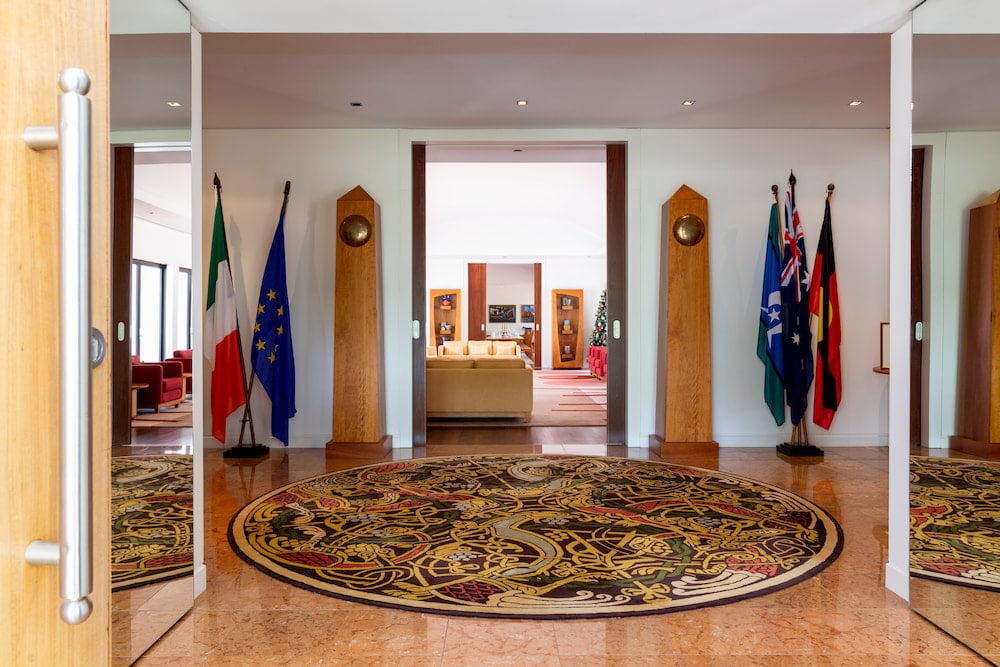
Our personal tour continues to the large formal sitting and dining area where Australian Jarrah hardwood floors and Connemara rugs from Belfast marry the best interior design elements of the two cultures.
“It’s all about contrast,” Ms Callan said.
For a typical Australian indoor/outdoor lifestyle, glass doors open from the sitting room onto a pool and alfresco dining area, where Irish dancers and Celtic choirs regularly perform.
“We like singing, we like poetry, we like music. So, there is a great richness in the culture,” Mr O Caollai said.
Throughout, the design nods to the Irish story of mass migration.
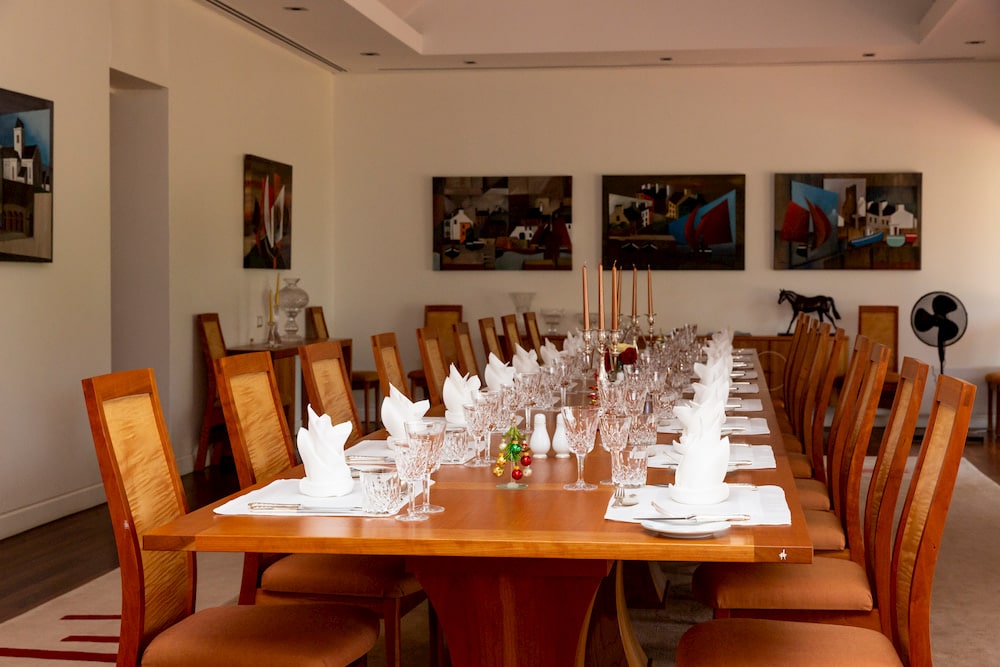
In the sitting room is a replica of a sculpture by Dublin-born artist John Behan,Arrival: The New Dawn.
The original lies at the United Nations compound in New York, representing the common 19th century Irish journey across the seas in every direction, fleeing poverty, oppression and injustice, in search of a new home and hope.
Centuries later, two-and-a-half million Australians officially claim Irish ancestry, but Mr O Caollai said our cultural identification included many more.
“The Irish are everywhere, and we integrate well,” he said.
“Wherever we go, we’re involved in labor movements, the political system, education, and health.
“The Irish are always overrepresented in the caring professions.
“Wherever the greatest challenges of humanity are, you’ll find the Irish.”
Mr O Caollai puts this down to their religious roots, but said modern Ireland was far less religious than previous generations.
Those historical links to religion are represented in the house, with a replica painting series telling the story of historical figure Colm Cille, who is believed to have brought Christianity to Scotland.
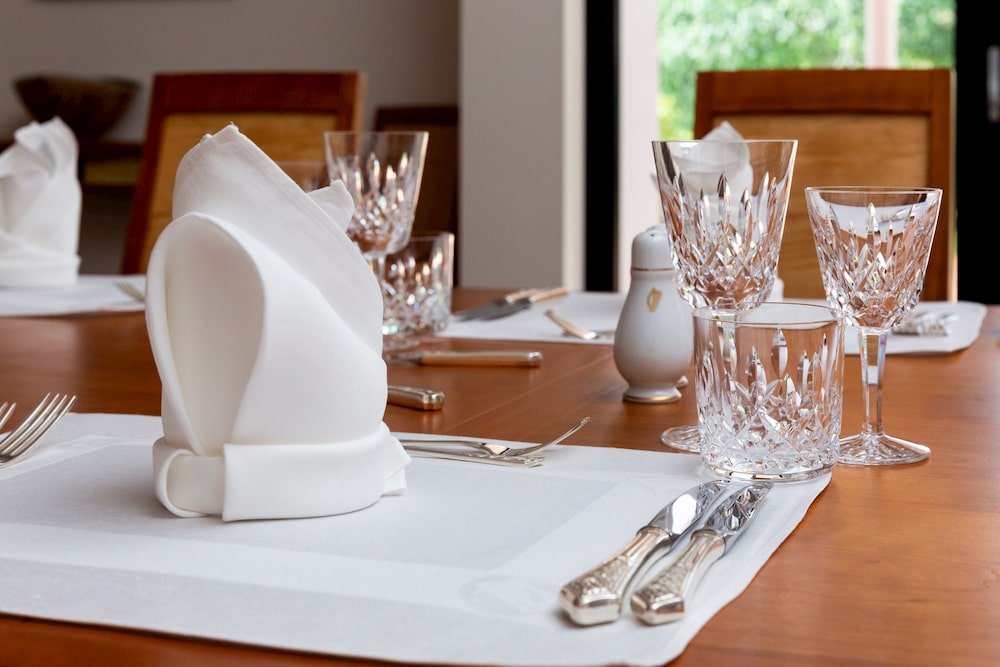
Cille fell out with religious authorities for illegally copying the scripture, which caused a brawl to break out in which people died.
In shame and contrition, Cille banished himself to Iona Island in Scotland.
Mr O Caollai said the incident was believed to be the first copyright infringement.
“The paintings are that same motif of the Irish voyage,” he said.
“It’s all about leaving home and the great welcome you get when you come back.”
In their fifth year in Australia, the former public servant and his wife from Dublin, are in no rush to return to Ireland.
Ms Callan can quickly rattle off a list of things she loves about living here: the wine, driving at sunset, touring small towns, finding historic Catholic churches and the weather, space, sky and stars.
Fortunately, her appreciation of the beauty of Australian natural elements is reflected in the décor and in the smaller dining room lies the dining table set known as the constellation suite.
Each chair is laid with individual silver marquetry of a constellation; half the chairs have markings from the southern hemisphere, the other half have northern, but all their stars light up.
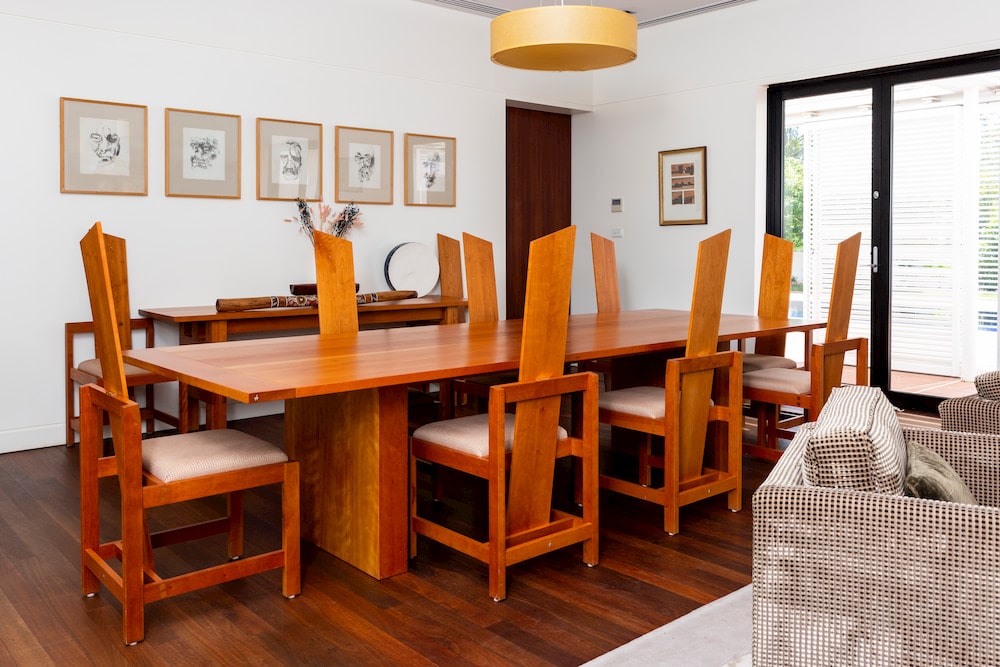
Above the constellation suite hangs portraits of great Irish writers: Seamus Heaney, Francis Stuart, John Millington Synge, Thomas Kinsella and John Montague. They have been drawn by one of Ireland’s most famous artists, Louis Le Brocquy.
Beneath them lives a didgeridoo.
Mr O Caollai said he had planned to learn how to play it, but quickly changed his mind.
“I decided Australian culture and Irish culture – neither would be enriched,” he smiled.
It is here the Ambassador reflects on the second part of the Irish story.
“There are two parts to the Irish history here,” he said.
“The part where they came here after facing injustice. They were Irish, they were Catholic, and they were at the bottom of the pile.
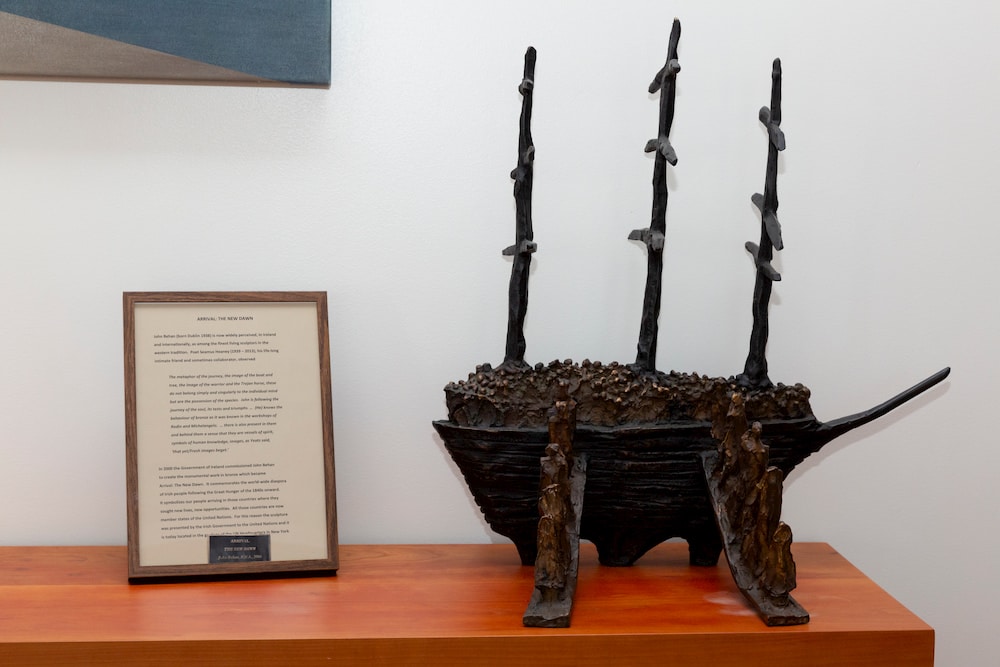
“But they became part of the colonisation process and part of the injustice against the Indigenous Australians.”
Mr O Caollai said he reflects Irish President Michael D. Higgins’ 2017 words when he recognises the Irish became part of colonisation and his desire to be part of the healing process as well.
“If we want people to recognise the injustices we’ve suffered, we can’t say we are without sin,” he said.
“In Northern Island there has to be an admission that we all did wrong. Otherwise, if you just say ‘oh you did wrong’, well that achieves nothing. And it’s not honest.
“There is an Irish saying, ‘to make something bright which is black’.”
Photography by Kerrie Brewer
For more stories:
Canberrans describe their 2020: the good, the bad and the brutal

